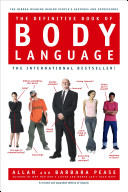Observing Human Body-Language is Like Birdwatching
As we approach the end of the twentieth century, we are witnessing the emergence of a new kind of social scientist-the non-verbalist. Just as the birdwatcher delights in watching birds and their behaviour, so the non-verbalist delights in watching the non-verbal cues and signals of human beings. He watches them at social functions, at beaches, on television, at the office or anywhere that people interact. He is a student of behaviour who wants to learn about the actions of his fellow humans so that he may ultimately learn more about himself and how he can improve his relationships with others.
[...]
As far as the technical study of body language goes, perhaps the most influential pre-twentieth-century work was Charles Darwin’s The Expression of the Emotions in Man and Animals published in 1872. This spawned the modern studies of facial expres- sions and body language and many of Darwin’s ideas and observations have since been validated by modern researchers around the world. Since that time, researchers have noted and recorded almost one million nonverbal cues and signals. Albert Mehrabian found that the total impact of a message is about 7 per cent verbal (words only) and 38 per cent vocal (including tone of voice, inflection and other sounds) and 55 per cent non-verbal. Professor Birdwhistell made some similar estimates of the amount of non-verbal communication that takes place amongst humans. He estimated that the average person actually speaks words for a total of about ten or eleven minutes a day and that the average sentence takes only about 2.5 seconds. Like Mehrabian, he found that the verbal component of a face-to-face conversation is less than 35 per cent and that over 65 per cent of communication is done non-verbally.
Most researchers generally agree that the verbal channel is used primarily for conveying information, while the non-verbal channel is used for negotiating interpersonal attitudes, and in some cases is used as a substitute for verbal messages. For example, a woman can give a man a ‘look to kill’; she will convey a very clear message to him without opening her mouth.
Notes:
The science of body language is relatively young, despite the communication form going back millions of years.
Folksonomies: anthropology body language
Taxonomies:
/art and entertainment/movies and tv/television (0.381712)
/technology and computing/internet technology/social network (0.351451)
/science (0.323510)
Keywords:
body language (0.942337 (positive:0.591060)), facial expres- sions (0.760965 (positive:0.743582)), non-verbal cues (0.702627 (positive:0.777929)), non-verbal channel (0.634370 (neutral:0.000000)), non-verbal communication (0.632888 (positive:0.351769)), birdwatcher delights (0.611306 (positive:0.622917)), verbal messages (0.599669 (neutral:0.000000)), verbal channel (0.596178 (positive:0.537832)), Albert Mehrabian (0.593044 (neutral:0.000000)), verbal component (0.591545 (negative:-0.214146)), non-verbalist delights (0.581834 (positive:0.777929)), twentieth century (0.576342 (neutral:0.000000)), nonverbal cues (0.570590 (negative:-0.401805)), Human Body-Language (0.570458 (positive:0.438537)), communication form (0.570191 (negative:-0.265382)), new kind (0.569182 (positive:0.408915)), human beings (0.552938 (positive:0.777929)), fellow humans (0.550657 (neutral:0.000000)), Charles Darwin (0.548987 (neutral:0.000000)), social functions (0.546983 (neutral:0.000000)), Darwin’s ideas (0.545301 (positive:0.743582)), technical study (0.544798 (neutral:0.000000)), pre-twentieth-century work (0.542493 (neutral:0.000000)), interpersonal attitudes (0.538596 (neutral:0.000000)), average sentence (0.537788 (negative:-0.290056)), modern studies (0.533202 (positive:0.743582)), face-to-face conversation (0.532163 (negative:-0.214146)), similar estimates (0.531498 (positive:0.351769)), Professor Birdwhistell (0.529248 (positive:0.351769)), total impact (0.527029 (neutral:0.000000))
Entities:
Albert Mehrabian:Person (0.914068 (negative:-0.214146)), Charles Darwin:Person (0.664651 (neutral:0.000000)), Professor Birdwhistell:Person (0.580942 (positive:0.030857)), Darwin:OperatingSystem (0.552120 (positive:0.743582)), eleven minutes:Quantity (0.552120 (neutral:0.000000)), 2.5 seconds:Quantity (0.552120 (neutral:0.000000))
Concepts:
Nonverbal communication (0.967875): dbpedia | freebase
Communication (0.582604): dbpedia | freebase | opencyc
Body language (0.504412): dbpedia | freebase
Paralanguage (0.503946): dbpedia | freebase
Metacommunicative competence (0.426811): dbpedia | freebase
Human (0.424496): dbpedia | freebase | opencyc
The Expression of the Emotions in Man and Animals (0.422386): dbpedia | freebase





